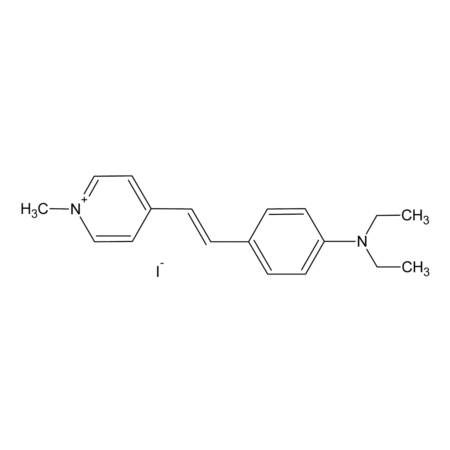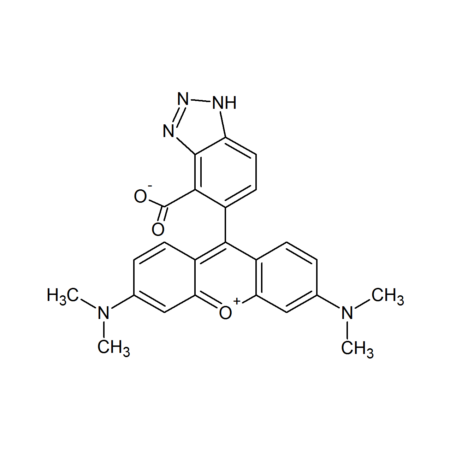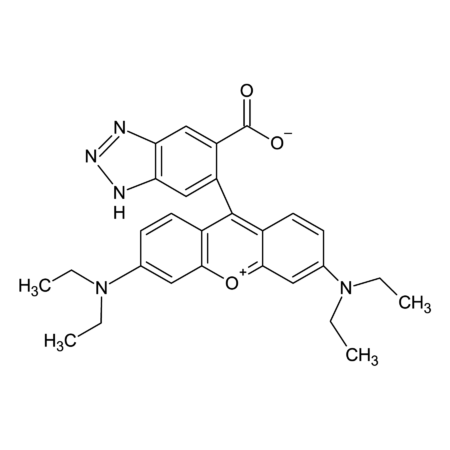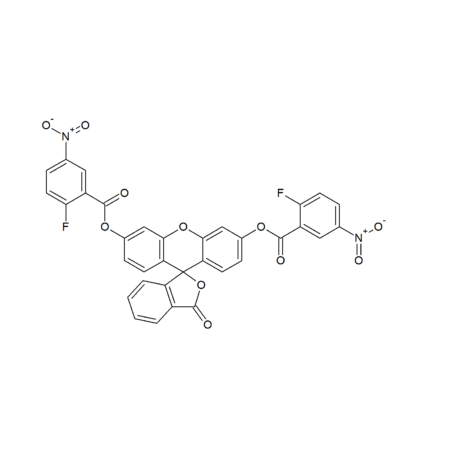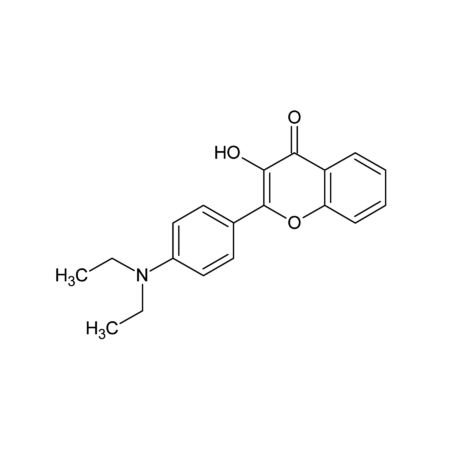4-Di-2-ASP
- SKU
- D0012
Category: Fluorescent Detection, Fluorescent Detection
- Synonyms
- 4-(4-Diethylaminostyryl)-1-methylpyridinium iodide
- 105802-46-8
- CAS-Number
- C18H23IN2
- Molecular Formula
- 394.29
- Molecular Weight
Specifications
- Purity
- ≥97% (NMR)
- Appearance
- Dark red crystaline powder
- Identity
- 1H-NMR
Properties
- Solvents
- DMSO, DMF, chloroform
- Melting Point
- 214-216°C (lit.)
- Fluorescence
- λex 485 nm, λem 603 nm in methanol
Downloads
- Safety Data Sheet
- CDX D0012 MSDS.pdf
- Shipping
- AMBIENT
- Short Term Storage
- +4°C
- Long Term Storage
- +4°C
- Handling Advice
- Protect from light and moisture.
- Use / Stability
- Stable for at least 2 years after receipt when stored at +4°C.
- Hazard statements
- H315, H319, H335
- Precautionary statements
- P261, P305 + P351 + P338
- GHS Symbol
- GHS07
- Signal word
- Warning
- Transportation
- Not dangerous goods
- Description
- Some cationic mitochondrial dyes such as 4-Di-1-ASP and 4-Di-2-ASP stain presynaptic nerve terminals independent of neuronal activity. The photostable 4-Di-2-ASP dye, which is nontoxic to cells, has been employed to stain living nerve terminals in rabbit corneal epithelium, in rat epidermis and at mouse, snake and frog neuromuscular junctions, as well as to visualize the innervation of the human choroid and whole mounts of the gastrointestinal tract. Methods for using 4-Di-2-ASP to image neuronal cells in live animals have been described (Ex/Em = 488/607 nm).
- Smiles
- [I-].CCN(CC)C1=CC=C(C=CC2=CC=[N+](C)C=C2)C=C1
- InChi Key
- WIPKWLIHFGTFQV-UHFFFAOYSA-M
- References
- (1) C. Seebacher et al.: Adv. Mat. 13(18), 1374 (2001) , (2) R.S. Wilkinson et al.: J. Neurosci. 14, 3319 (1994) , (3) L. Chen et al.: J. Neurosci. 14, 796 (1994) , (4) M.B. MacIver et al.: J. Neurosci. 13, 4511 (1993) , (5) A.A. Herrera et al.: J. Neurocytol. 19, 67 (1990) , (6) C.A. Nurse et al.: Cell Tissue Res. 255, 125 (1989)
- InChi
- InChI=1S/C18H23N2.HI/c1-4-20(5-2)18-10-8-16(9-11-18)6-7-17-12-14-19(3)15-13-17
Some cationic mitochondrial dyes such as 4-Di-1-ASP and 4-Di-2-ASP stain presynaptic nerve terminals independent of neuronal activity. The photostable 4-Di-2-ASP dye, which is nontoxic to cells, has been employed to stain living nerve terminals in rabbit corneal epithelium, in rat epidermis and at mouse, snake and frog neuromuscular junctions, as well as to visualize the innervation of the human choroid and whole mounts of the gastrointestinal tract. Methods for using 4-Di-2-ASP to image neuronal cells in live animals have been described (Ex/Em = 488/607 nm).

